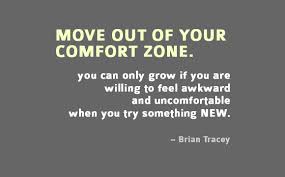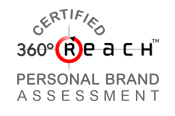 What is your fear? Telling the truth? Sharing your truth? Or, perhaps, of being rejected?
What is your fear? Telling the truth? Sharing your truth? Or, perhaps, of being rejected?
Fear can stop you in your tracks. Why?
First, it is not easy or comfortable to step into your truth. Second, telling and sharing your truth and what makes you unique makes you vulnerable. Third, some will reject you for your truth.
“When you are true to yourself, people will love the truth in you” – Stacey Martino
The above quote is from an amazing woman I am honored to know. She has built a business that few would dare to.
Additionally, she is sunny, bubbly, warm, open and highly excitable. Stacey can be loud and describes herself as “overly-loving.” To be in her presence is like unlocking a door and walking into a room filled with pure joy and fun.
So what does this have to do with you securing your ideal job? Absolutely everything!
Stacey Martino is a person who knows herself. She discovered she wanted to be herself all the time and she stopped hiding her strengths and talents because of fear. A few weeks ago, in her blog, Stacey shared she was afraid of, “getting crushed by people who wipe the floor with OPEN people like me.”
Stacey didn’t ask me, but if she did, I would absolutely tell her to include that she is a sunny, bubbly, warm, open and sometimes loud and highly excitable person in her résumé. Would this screen her out of some jobs as a marriage counselor? ABSOLUTELY!
Why? Simple. There are workplaces, that no matter her skills, education or experience, her unique style would not be appreciated and in the end it would not serve the organization or her. The result? You guessed it — rejection!
If any of these fears are holding you back, consider this: when your resume is one of 200 (or more!) being considered for a single position, it is not only your skills and career history that are reviewed. Résumés need to be sifted and sorted and the pool narrowed to the select few who will be granted an interview. In the end, your “unique truth” plays a huge role in securing an interview, a second interview and an offer. Each applicant brings a unique and different dimension to a potential position, in addition to their skills and experience. Remember, hiring is a process and not a perfect science.
Believe it or not, hiring managers are looking to make the best decisions using the facts they have or can obtain. Every organization and every hiring manager needs to narrow the field and the methods used to do this vary. Some immerse themselves in the pile of résumés, others search LinkedIn profiles or request recommendations from key contacts — some do it all.
Although there are proven methods to improve your results, getting your resume to land atop the pile can be a frustrating process. And, while everyone understands how maddening the process can be, few are willing to do what it takes to positively impact their results.
The truth about who you are, what you do and how you do it helps in this process. So does the truth that you are loud and fun!
Yes, many résumés are filled with lies. Many lies are easy to spot. Such as when a résumé states “excellent writer” and then the résumé is filled with bad grammar and misspellings. Many more résumés simply omit the truth.
Have you neglected to help the hiring manager say “Yes!” to you?
Have you omitted your unique value and your truth in your résumé?
Are you pursuing a search of limiting your rejection rate in lieu of a search to land the job you want?
If you are unsure how to add your unique value to your résumé or you need assistance landing the job you want, contact me.










